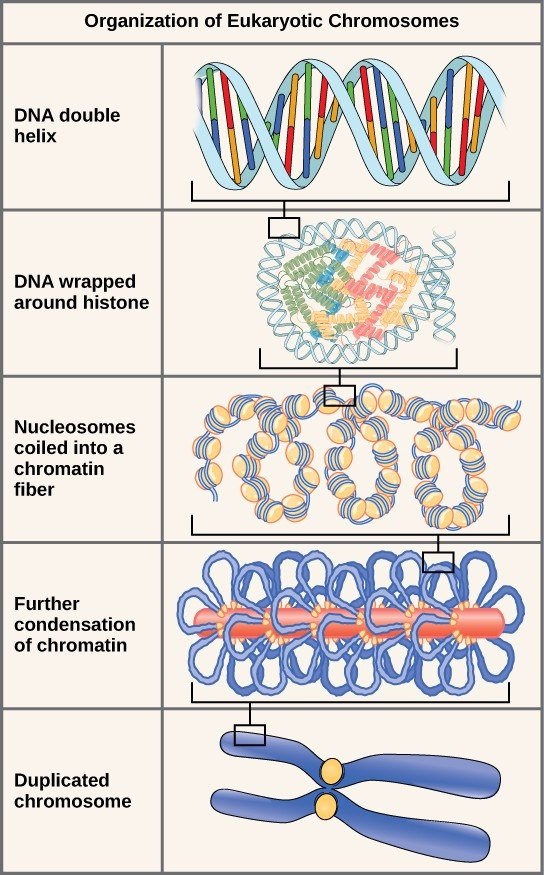Introduction.
Cell division is an essential part of any multicellular organism. The main reason for cell division is to make sure each daughter cell receives a copy of every chromosome. DNA being the blueprint for the building of cells, the slightest error could result in disease or death; therefore, a cell has set aside an exact and specific process called mitosis to ensure equal amounts of nuclear DNA end up in both of the daughter cells during cell division. DNA has roughly three billion bases, thus fitting them in a tiny place such as the nucleus becomes a very complicated process. This is achieved through DNA condensation, a process defined as the collapse of extended DNA chains into compact and orderly particles containing a few or only one molecule.
DNA packaging requires the terminase proteins to link replicated DNA into a mature pro head that acts enzymatically during tDNA (translocation DNA) to cut DNA in the process of packaging.
The general structure of the Human Genome.

Histone proteins are the class of proteins used in the mediation of DNA packaging. They are altered by a number of chemical modifications hence used in the regulation of the accessibility of the underlying DNA. The core nucleosome particle with a composition of 147 base pairs of DNA wraps around an out comer of four core histone proteins. The nucleosomes fold into 30 nm chromatin fibres (the components that make up chromosomes).The human genome is about 1 meter (is 3 × 109 base pairs) combines into a nucleus that is 10−5 meters in diameter.
The regulation of chromatin possesses profound consequences to the cell, as the ability to close and open the environment in which the DNA is packaged is the mechanism in which the genes in a chromosome get expressed in proteins. At this stage, the structure of chromatin is well understood, but the packaging of chromatin into a chromosome is not. Under the primitive light microscope, the chromosomes are visible with clarity with dyes that react with DNA. Heterochromatin are the dense, compact regions of chromosomes, consisting of mostly untranscribed and inactive DNA. Euchromatin are regions that are less compact and consist of highly transcribed genes.
The way in which the DNA is packaged into chromatin plays an essential function in the control and organization of the information that the DNA holds.
Depending on the chemical modification of histones, some information is accessible and some not when packaged into chromatin. The accessible regions of DNA undergo changes during human development or during different disease stages.
Epigenetics is the process of altering gene expressions in a heritable, stable manner without making changes in the DNA code.
